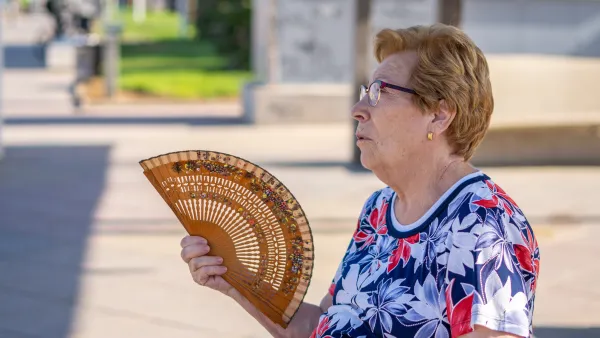Experts are urging cities and counties to develop heat action plans and personalized heat warnings as extreme heat becomes a leading cause of climate-related deaths.

As extreme heat continues to be the leading cause of climate-related deaths in the U.S., experts emphasize the need for improved tracking, response strategies, and community awareness. While the Centers for Disease Control (CDC) reported 2,300 heat-related deaths last year, studies suggest the actual toll may be much higher, with California among the hardest-hit states. Efforts are underway to create more effective heat warning systems, including a new pilot program in California aimed at improving the availability of real-time data on how heat affects individuals, potentially guiding more immediate protective measures in homes, schools, and workplaces.
Communities are exploring various strategies to combat extreme heat, such as planting more trees, increasing access to air conditioning, and establishing cooling centers. However, experts argue that more targeted information is needed to ensure people can make informed decisions about their exposure to heat. Researchers are now studying how individual physiological differences affect responses to heat, which could lead to personalized heat warnings. For example, mobile apps could provide tailored recommendations based on current weather conditions and personal health data to help individuals avoid dangerous heat exposure.
California has already begun implementing its Extreme Heat and Community Resilience Program, which allows local governments and organizations to apply for grants to develop cooling strategies such as increasing shade and making buildings more heat-reflective. In addition, UCLA's new Center for Heat Resilient Communities is spearheading efforts to develop a comprehensive blueprint for building heat-resilient communities. Over the next three years, the program will collaborate with 30 communities nationwide to field-test practical solutions, aiming to help local areas adapt to increasing heat risks and improve public health outcomes.
FULL STORY: Fall is here, but experts say communities need a heat plan

National Parks Layoffs Will Cause Communities to Lose Billions
Thousands of essential park workers were laid off this week, just before the busy spring break season.

Retro-silient?: America’s First “Eco-burb,” The Woodlands Turns 50
A master-planned community north of Houston offers lessons on green infrastructure and resilient design, but falls short of its founder’s lofty affordability and walkability goals.

Delivering for America Plan Will Downgrade Mail Service in at Least 49.5 Percent of Zip Codes
Republican and Democrat lawmakers criticize the plan for its disproportionate negative impact on rural communities.

Test News Post 1
This is a summary

Test News Headline 46
Test for the image on the front page.

Balancing Bombs and Butterflies: How the National Guard Protects a Rare Species
The National Guard at Fort Indiantown Gap uses GIS technology and land management strategies to balance military training with conservation efforts, ensuring the survival of the rare eastern regal fritillary butterfly.
Urban Design for Planners 1: Software Tools
This six-course series explores essential urban design concepts using open source software and equips planners with the tools they need to participate fully in the urban design process.
Planning for Universal Design
Learn the tools for implementing Universal Design in planning regulations.
EMC Planning Group, Inc.
Planetizen
Planetizen
Mpact (formerly Rail~Volution)
Great Falls Development Authority, Inc.
HUDs Office of Policy Development and Research
NYU Wagner Graduate School of Public Service





























